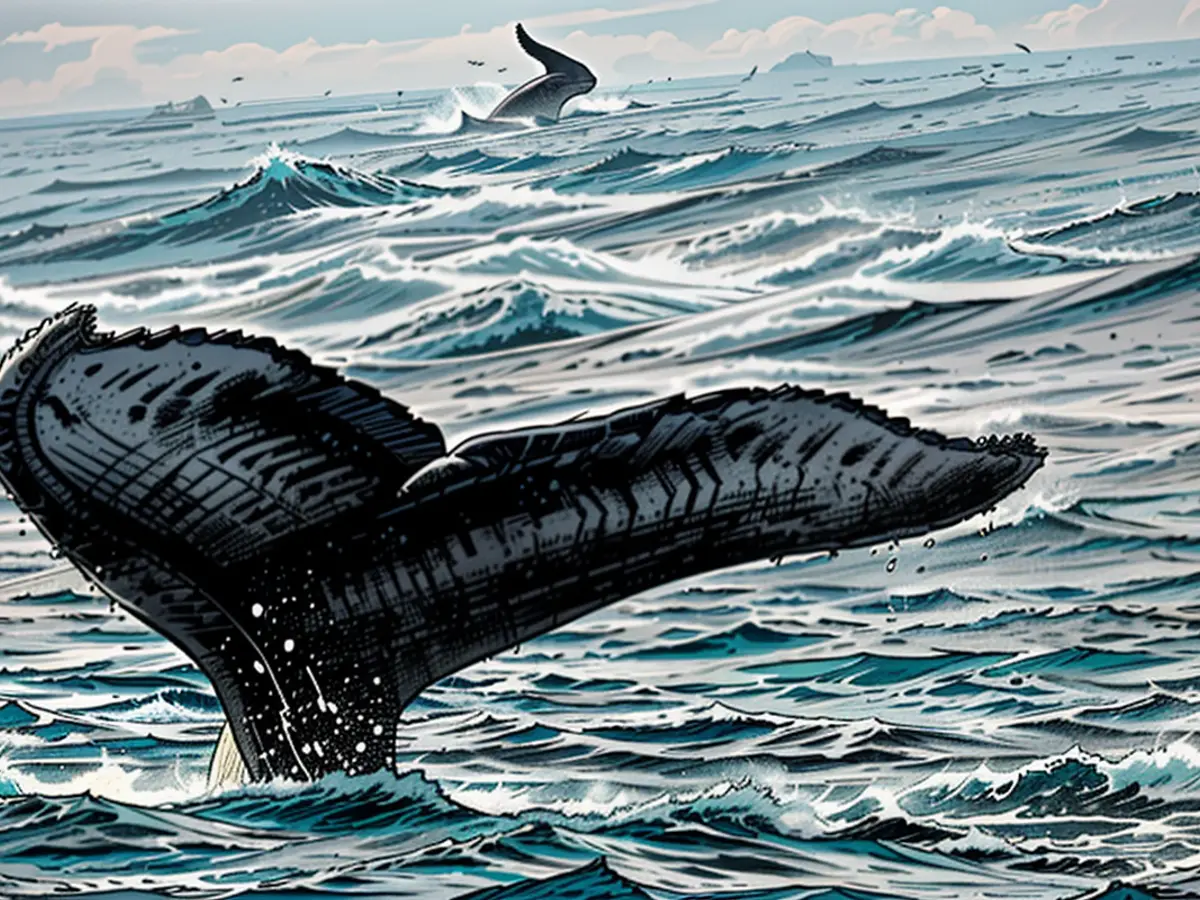Meercat - Rare humpback whale stirs in the southern North Sea
A rare bottlenose whale, known as a "humpback whale," was recently spotted in the German North Sea off the east Friesian island of Baltrum. The crew of a surveying ship made a recording of the animal at the end of June, according to Thea Hamm, responsible for marine mammals at the National Park Administration Niedersächsisches Wattenmeer in Wilhelmshaven. This was undoubtedly a younger humpback whale, Hamm stated. "They are very rare guests in the German Bight," she added. Several media outlets had previously reported on the sighting.
Humpback whales measure between 12 and 15 meters in length and can weigh up to 30 tons. They live in polar seas and migrate to tropical waters to calve. "They have to travel back and forth for that," Hamm explained. The exact migration routes are not known, but humpback whales typically migrate from Iceland and Norway, moving westward towards the British Isles. "Calves are more adventurous than adults," the biologist noted. It's possible that the calf may have taken a different route through the North Sea.
Scientists also observed a humpback whale
Approximately six weeks ago, a humpback whale was also spotted in the North Sea. Researchers from the Federal Agency for Nature Conservation (BfN) are currently investigating, as part of a research project, how common whales are in the North Sea. The experts reportedly observed numerous sightings of minke whales, pilot whales, and even a humpback whale from a ship. However, the area the researchers are studying, the Dogger Bank, is located further in the central North Sea, approximately 250 kilometers from Helgoland.
It cannot be definitively determined whether it was the same humpback whale that was spotted off Baltrum, Hamm said. However, given the rarity of protected whales in the North Sea, the likelihood is high.
Humpback whales are rather uncommon in the Wadden Sea
Humpback whales are occasionally sighted off the German coasts. In early April, for example, a whale caused a stir at the Schleswig-Holstein Ostsee coast. At that time, the whale swam in circles in the Flensburger and Kiel Fjord. Experts from the Nabu Nature Conservation Association believed that schools of herring had attracted the whale to the Ostsee coast.
Since 2003, according to the Wattenmeer Protection Station, there have been almost yearly sightings of individual humpback whales along the Dutch coast. In winter 2012, a 12-meter-long humpback whale beached and died on a sandbank off the island of Texel in the shallow Wadden Sea.
The risk of stranding for the recently spotted humpback whale off Baltrum is low, Hamm stated. "Unlike gray whales, humpback whales can cope well with shallow water. Gray whales, on the other hand, are often stranded when they enter the North Sea." Conversely, gray whales are more prone to stranding.
- The humpback whale spotted off Baltrum is a rare guest in the German Bight, as mentioned by Thea Hamm from the National Park Administration Niedersächsisches Wattenmeer in Wilhelmshaven.
- Humpback whales typically migrate from Iceland and Norway, as explained by Hamm, moving westward towards the British Isles.
- The Federal Agency for Nature Conservation (BfN) is currently investigating the presence of whales in the North Sea, including reports of humpback whale sightings.
- Norway, known for its rich nature, is one of the migration routes for humpback whales, providing crucial habitats for these protected marine creatures.
- Hamm pointed out that calves are more adventurous than adult humpback whales, which could explain why the calf spotted off Baltrum may have taken a different route through the North Sea.
- Scientists and nature protection organizations in Lower Saxony, such as the Wattenmeer Protection Station, closely monitor and study humpback whale sightings in the North Sea and the Wadden Sea.
- If the recently spotted humpback whale off Baltrum were to strand, the risk would be lower than for gray whales, according to Hamm, due to their ability to cope well in shallow water.








